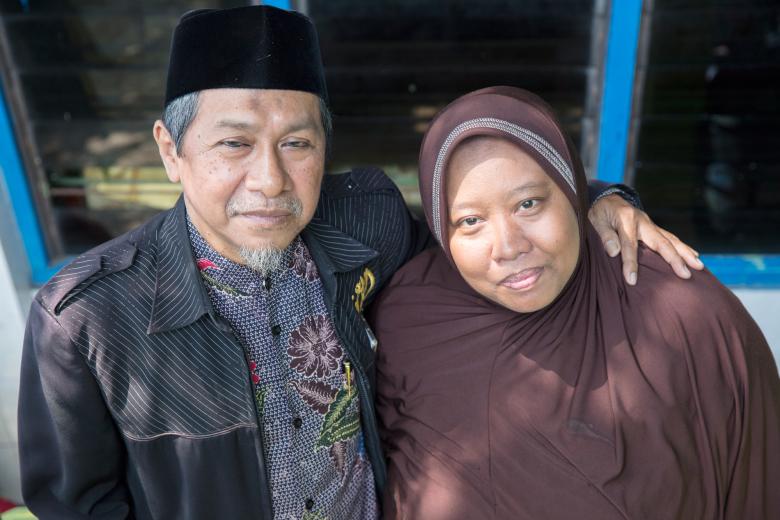Heartbeat of the school
Built more than 35 years ago, Islamic school SD Mustajabah stood out in its blue-and-green coat of paint between a sea of houses and an estuary in the Tegal Sari community, Indonesia. The classrooms are filled with the cacophony of students reciting their daily lessons punctuated by the beat of a marching band’s practice.
Since 2014, Habitat for Humanity Indonesia has helped more than 5,000 individuals in Tegal Sari, a slum community more than 760 kilometers east of the Indonesian capital Jakarta. With funding from Korean donors, Habitat works with families to improve their lives through decent housing, clean water and safe sanitation. Habitat Indonesia is also implementing a five-year community action plan. This includes rehabilitating Tegal Sari’s drainage system, setting up a waste management system and renovating community centers, schools and community toilets. Training in waste management and maintaining a safe, healthy living environment will be provided. In addition, Habitat Indonesia has supported school repairs and greening programs in the community.

The husband-and-wife team of Ilyas, 62, a preacher and the school’s second-generation principal, and Fatima, 37, the guidance counselor, runs SD Mustajabah. (Habitat for Humanity International/Ezra Millstein)
As the second-generation principal of SD Mustajabah, Ilyas, 62, knew that upgrades were overdue. “This school was built via waqaf — a donation — in 1980. A private organization helped construct the first building,” he recalled. Since then, hundreds of students have received free education but the much-needed upgrade to the school buildings were put on hold due to the lack of funds.
“I wanted new doors and windows for the classroom. Before Habitat came and helped us repair the school, there were frequent accidents because the students kept playing in the school promises and were always at risk of getting into accidents with the broken doors and windows,” Ilyas said. “I also wanted to build ceilings in the classroom. That would help to regulate the temperature inside the classrooms and offices, which made for a more conducive environment for studying and working.”
In 2015, the school was rehabilitated with the help of the students’ parents, community members and Global Village volunteers from Korea. The work included adding a second floor with more classrooms and building a library. “The parents were involved in the building progress and some parents came to support the construction,” said Ilyas. “It was truly gotong royong — communal work — where everyone had good harmony and cooperation.”
Said, a 56-year-old religion teacher at the school, was among those who helped with the repair work. He had also installed a septic tank in his own house with Habitat’s help after learning of the organization from his neighbor. “There were so many broken facilities in the school. When Habitat helped us repair them, my students and the teachers were all glad.”
Ilyas also highlighted the good working relationship that has been forged between Habitat and the school. “After Habitat has finished helping us build the school, the new buildings really made a good impression on the community. More parents now want to enroll their children in the school.”
“If Habitat did not help to repair the school, I think it will not be doing so well now,” said guidance counselor Fatima, 37, who is married to Ilyas. “Because the school is beautiful and clean, the students are more eager to maintain its cleanliness.”
The school has also become a second home to students like Dinar. The 12-year-old stays back after school with her four good friends to play and study together, after which they will take turns to visit each other’s house. Daughter of Habitat homeowners, Dinar loves mathematics and hopes to become a doctor someday.
Find out more about Habitat’s work and our supporters through our e-newsletter, Asia-Pacific Update. Subscribe now.